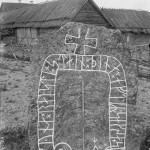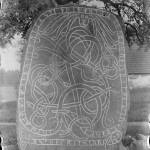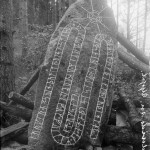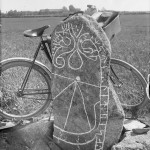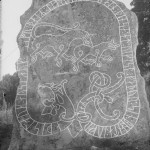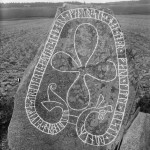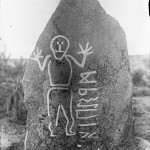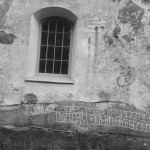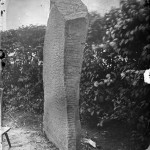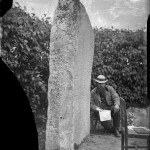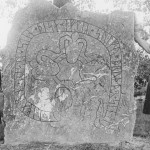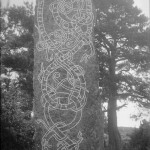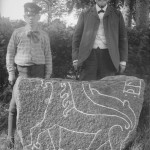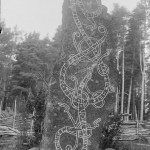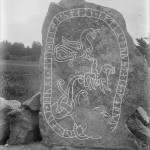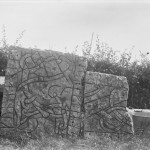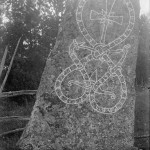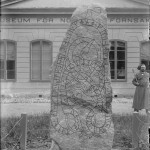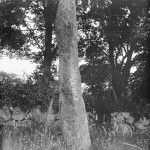Swedish National Heritage Board
The Swedish National Heritage Board has some excellent old images of rune stones posted in their flickr photostream. I highly suggest that you have a look at these fantastic shots which show great details of runes carved into stones.
- Jursta, Södermanland, Sweden
- Holm, Uppland, Sweden
- Västra Ledinge, Uppland, Sweden
- Råby, Västmanland, Sweden
- Svartsjö, Uppland, Sweden
- Grällsta, Västmanland, Sweden
- Krogsta, Uppland, Sweden
- Bjälbo Church, Östergötland, Sweden
- Rökstenen, Östergötland, Sweden
- Rökstenen, Östergötland, Sweden
- Rökstenen, Östergötland, Sweden
- Herrstaberg, Östergötland, Sweden
- Skråmsta, Uppland, Sweden
- Kärna, Östergötland, Sweden
- Näsby Odensala, Uppland, Sweden
- Hovgården, Hov, Östergötland, Sweden
- Harg, Uppland, Sweden
- Orlunda Churchyard, Östergötland, Sweden
- Skråmsta, Uppland, Sweden
- Uppsala, Uppland, Sweden
- Boberg, Östergötland, Sweden
- Ekeby, Uppland, Sweden
- Härad, Södermanland, Sweden
The Swedish National Heritage Board are members of The Commons which state that there are “no known copyright restrictions” to their images. As shown on their website they state:
The photographs are available free of charge if you download them for private or non-profit use.
Seeing as, at this moment, this is a non-profit website, I feel the images are safe to share.
Gothic Rune Set
The Gothic rune set, while lacking its own rune poem, does have some very interesting meanings known to us. The reason for this is due to a bishop from the middle of the fourth century named Ulfila. Bishop Ulfila set out to construct a new alphabet that was largely based on the Gothic runes as well as Hellenic Greek and Arian and Gnostic Christian sources. While his alphabet failed for its purpose it did do a few positive things for the runes. Ulfila’s meanings for his magical alphabet found their way back into the meanings for the Gothic runes. Some would say that this is not a benefit for the runes because Ulfila’s own meanings may have replaced the older meanings for the runes. However, since we no longer have much idea what those meanings are, we do have at least one version of meanings for the runes. Of course, being a bishop, we do tend to see a sort of “Christian flavor” to the meanings, which can be looked on as either a good or a bad thing – all depending on your view.
When Christianity started to rise among the Goths they gave up their use of the runes, but they did replace their rune use with the use of Bishop Ulfila’s alphabet. The use of the new alphabet may in fact have kept us from forgetting about the Gothic runes and their meanings. Even though the true meanings may be lost, we do see at least one set of meanings for these runes thanks to the bishop. Also, I find it hard to believe that while creating meanings for his own alphabet that Ulfila completely ignored the original meanings for the Gothic runes. So there is still a possibility that the newer, “more Christianized” meanings have hints of the original meanings in them.
Another reason we know a little more about the Gothic runes, despite it not having a rune poem, is thanks to Otto von Friesen. This Swedish researcher, in 1928, published Runorn i Sverige in which he reconstructed the Gothic runes, their meanings as well as assigned genders to each rune. An excellent work that allows us more insight to the runes and their meanings on a whole new level.
Timeline of Rune History
This is only a brief timeline of the runes. I will be adding more as this site continues to grow so please be sure to check back often.
5th century B.C.E.
In the Alpine region the ‘alphabets’ known as North Etruscan, North Italic or Alpine come into existence. Later these ‘alphabets’ will play an important role in the development of the runes.
4th century B.C.E.
The Alpengermanen are thought to have come into contact with Alpine (or North Italic or North Etruscan) ‘alphabets’ and made use of them.
3rd century B.C.E.
There is a fusion between the Alpine alphabets and the pre-systemized runes forming the 24 staves of the Germanic or Elder runes. A bronze helmet found at Negau in Steiermark that was dated to possibly the 3rd century B.C.E. was inscribed in a Germanic language with Alpine lettering.
2nd century B.C.E.
Rome conquered Etruria and brings in the Roman alphabet. However the letters of the Etruscan alphabet may have advanced north through traders.
Near the end of the 2nd century B.C.E. Germanic survivors of the battles of Vercellae (the Cimbri) and Aquae Sextiac (the Teutons) stay in the area. The Cimbri, before crossing the Alps back towards Germany, may possibly have learned the runes and passed them on the Suevi.
1st century B.C.E.
The Cimbri, Suevi or possibly the Teutons advance the runes northwards down the Rhine river. At this same time the Marcomanni move the runes eastward. A goblet found at Vehlingen with a runic formula is dated to the 1st century B.C.E.
1st century C.E.
The Roman author Tacitus writes his “Germania 10” in which he gives an account of the divinatory methods of the ancient Germanic people. Also in this work it is presented that although men carried out the rituals Tacitus may have witnessed, women were held in high regard for their holiness and gifts of prophecy.
200 C.E.
A lance tip carved with runes is found at ØvreStabu in Norway and is said to date to this time.
400 C.E.
Around this time Rome is looted by people who are familiar with the runes. These people may have taken some Roman letters and incorporated them into rune lore. Also the Kylver stone, a Gothic grave slab in Gotland, shows us the first f-u-þ-a-r-k (f-u-th-a-r-k) order.
550 C.E.
A gold medallion found in Vadstena Sweden shows the three families of runes separated by double dots.
800 C.E.
Earliest date of a purely Norse rune-stave inscription.
1000 C.E.
Anglo-Saxon Rune Poem is written.
3rd century C.E.
By this time the runes have made their way to Denmark, Jutland, and Scandinavia by traveling along North Sea costal routes consisting of the Frisian Islands, Heligoland Bay as well as across Schleswig-Holstein.
6th century C.E.
Saxons bring to England the 28 rune-staves of the futhork that was developed in Friesland.
9th century C.E.
Development of the 33 rune-staves in Northumbria.
Early in the 9th century the use of the Germanic Futhark comes to an end. However, after a short transition an entire Scandinavian rune-row comes into existence mainly based on the Germanic runes.
11th century C.E.
Icelandic rune poem is written.
13th century C.E.
Norwegian rune poem is written.
16th century C.E.
Runic inscriptions in Gotland date to as late as the 16th century.
17th century C.E.
Runic inscriptions in Iceland date to as late as the 17th century.
